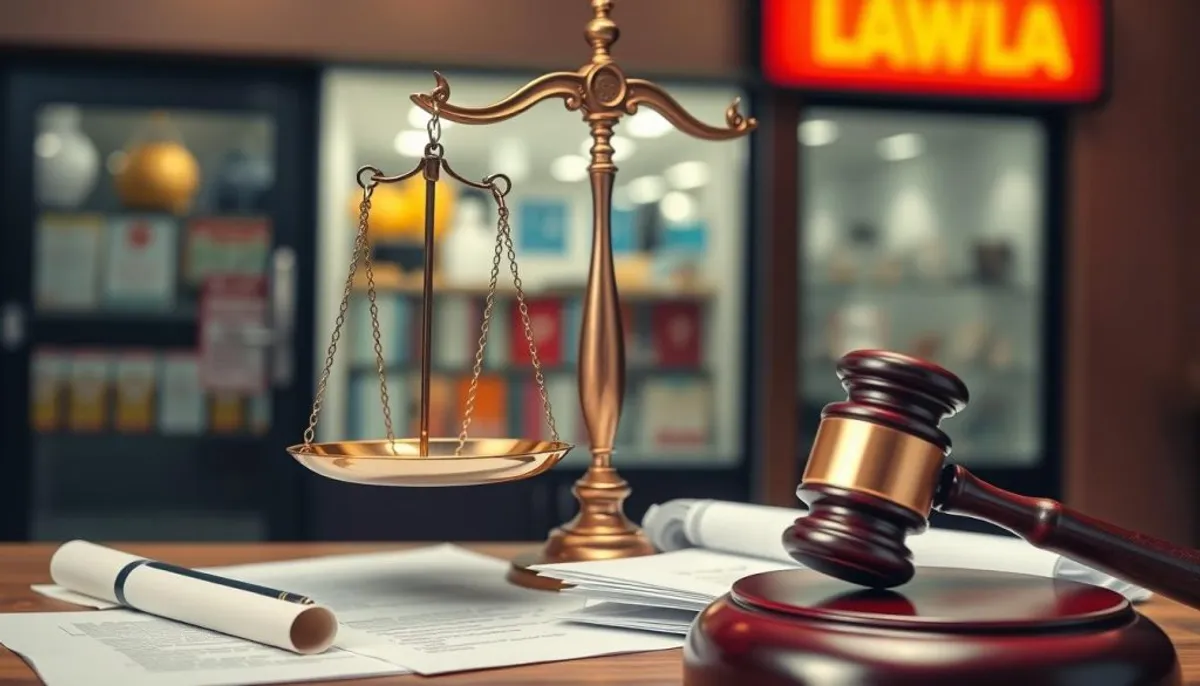Managing a small business is a daunting task, exacerbated by customers who fail to meet payment deadlines. The accumulation of overdue invoices can severely disrupt cash flow, jeopardizing the very survival of your enterprise. This is where the importance of small business debt collection becomes apparent. It serves as a vital mechanism to uphold financial equilibrium and ensure compensation for your endeavors.
Effective accounts receivable management transcends mere payment pursuit. It involves a delicate balance between preserving professional relationships and safeguarding your business’s financial health. When unpaid debts accumulate, the necessity for external assistance may arise. Collection agencies, with their expertise, can recover these debts, albeit at a cost ranging from 25% to 50% of the total amount collected.

The cornerstone of successful debt collection lies in prompt action. Promptly addressing overdue invoices within 45 days of their due date significantly enhances the likelihood of successful recovery. Beyond 60 days, escalating your collection efforts or seeking professional intervention becomes imperative. It is crucial to adhere to the Fair Debt Collection Practices Act (FDCPA), which safeguards consumers from unfair debt collection practices.
Key Takeaways
- Act quickly on overdue invoices to improve collection chances
- Consider professional help for debts over 60 days old
- Collection agencies typically charge 25-50% of recovered amounts
- Phone calls are often the most effective collection method
- Familiarize yourself with FDCPA regulations to stay compliant
- Trade credit insurance can protect against customer insolvency
- Ethical collection practices help maintain customer relationships
Understanding Business Debt Collection Fundamentals
Business debt collection is a vital component of accounts receivable management. It entails retrieving unpaid payments from customers who have not settled their obligations for goods or services. Implementing effective debt recovery strategies is imperative for preserving cash flow and business stability.
What Constitutes Business Debt
Business debt generally pertains to unpaid invoices for products or services rendered. These unpaid bills can vary significantly, from minor to substantial amounts, contingent upon the transaction’s nature. Timely invoicing can elevate payment rates by up to 70% in certain sectors, underscoring the significance of efficient billing practices.
Common Causes of Unpaid Invoices
Several factors contribute to unpaid invoices:
- Customer cash flow problems
- Invoice errors or discrepancies
- Delivery issues or disputes
- Lack of clear payment terms
Offering flexible payment options can significantly boost debt recovery success rates by up to 30%. This strategy acknowledges that customers may encounter temporary financial hurdles. It provides them with feasible repayment solutions.
Impact on Business Cash Flow
Outstanding payments can profoundly impact a business’s financial well-being. They can lead to:
- Reduced working capital
- Strained supplier relationships
- Difficulty meeting financial obligations
Promptly addressing unpaid invoices, ideally within 45 days post-due date, is critical for maintaining a robust cash flow. Businesses that foster open and honest communication experience a 40% reduction in disputes during the debt collection process. This highlights the importance of transparent communication in accounts receivable management.
Early Prevention Strategies for Overdue Payments
Smart businesses recognize the importance of preventing late payments to ensure a steady cash flow. Implementing effective strategies can help reduce overdue payments and maintain financial stability.
The Account Receivable Aging Report is a vital tool. It identifies past due accounts and their outstanding amounts, enabling timely action. Regularly monitoring this report is crucial for effective credit control.
Automated payment reminders are another effective strategy. These reminders can significantly boost the chances of on-time payments. Industry data shows that early intervention on outstanding invoices improves payment chances and sets a positive tone for future transactions.
- Clearly state payment terms in contracts and invoices
- Implement a robust credit control system
- Consider introducing late payment fees as a deterrent
- Maintain regular communication with customers about their payment obligations
The longer an invoice remains unpaid, the less likely it is to be settled. Nearly half of all invoices issued by U.S. businesses eventually become overdue. Acting quickly when payment issues arise is essential. Utilize multiple channels like email, phone, and social media to promptly contact clients.
By adopting these preventive measures, you can significantly reduce the need for debt collection activities. This helps maintain a steady cash flow for your business.
The Small Business Debt Collection Process
Small businesses encounter distinct hurdles in debt recovery strategies. Grasping the debt collection process is vital for sustaining cash flow and curtailing overdue invoices. We will dissect the pivotal phases of small business debt collection.
Initial Contact Procedures
The initial step in debt recovery is engaging with the debtor. This often entails dispatching amicable reminders via email or phone. It’s imperative to uphold a professional demeanor and explicitly articulate the debt amount and due date. Many enterprises achieve success by leveraging automated payment reminder systems to enhance this process.
Documentation Requirements
Accurate documentation is paramount for efficacious debt collection. It is crucial to maintain meticulous records of all transactions, encompassing:
- Signed contracts
- Invoices
- Payment history
- Communication attempts
These documents act as proof if legal recourse is deemed necessary. Employing customer relationship management tools facilitates the organization and monitoring of this data.
Timeline for Collection Actions
A standard timeline for debt collection actions might be as follows:
| Days Past Due | Action |
|---|---|
| 1-30 | Friendly reminder email or call |
| 31-60 | Follow-up call and written notice |
| 61-90 | Final demand letter |
| 90+ | Consider collection agencies or legal action |
It is crucial to maintain professionalism throughout this process. This approach is essential for safeguarding customer relationships while recuperating what is owed.
Legal Rights and Regulations in Debt Collection
Debt collection laws are pivotal in safeguarding both consumers and businesses. The Fair Debt Collection Practices Act (FDCPA) establishes the benchmark for ethical debt collection in the United States. This legislation aims to curb abusive practices and uphold fairness in debt collection processes.
Fair Debt Collection Practices Act Overview
Enacted in 1977 and amended in 2010, the FDCPA delineates specific rules for debt collectors. It prohibits deceptive tactics and prescribes communication protocols with debtors. Collectors must validate debts before pursuing legal action, adhering to stringent communication standards.
State-Specific Collection Laws
Though the FDCPA offers federal protection, numerous states have enacted supplementary laws to shield consumers. These state-specific regulations often broaden protections to commercial entities, addressing local concerns. It is imperative for business owners to acquaint themselves with both federal and state debt collection laws to ensure compliance.
Prohibited Collection Practices
The FDCPA delineates several practices that debt collectors are forbidden from engaging in:
- Contacting debtors outside of 8 a.m. to 9 p.m.
- Making false threats of legal action
- Utilizing unfair or deceptive practices to collect debts
- Sharing confidential information about the debt

Transgressing these regulations can incur severe penalties. Small businesses collecting their own debts, though not bound by the FDCPA, should adhere to ethical practices. This is crucial for maintaining their reputation and avoiding legal complications.
| Aspect | FDCPA Regulation | Impact on Debt Collection |
|---|---|---|
| Communication Time | 8 a.m. to 9 p.m. only | Limits collector-debtor interactions |
| Debt Validation | Required before legal action | Ensures accuracy of claimed debts |
| Third-Party Communication | Restricted | Protects debtor’s privacy |
| Deceptive Practices | Prohibited | Promotes fair collection methods |
Professional Debt Collection Services
Small businesses facing unpaid invoices often seek professional debt collection services. These agencies employ advanced debt recovery strategies to recover outstanding balances. Their expertise in managing accounts receivable significantly boosts a business’s cash flow.
Collection agencies are known for their high success rates. For instance, a leading agency has an average annual recovery of over $20 million in previously uncollected debts. Their recovery rate is 42% when given accurate debtor contact information. Even for accounts that have failed previous collection attempts, they maintain an 18.1% success rate.
When selecting a collection agency, it’s crucial to evaluate their experience and reputation. Some agencies have decades of experience serving small businesses, focusing on legal and ethical debt collection practices. They strictly follow regulations like the Fair Debt Collection Practices Act (FDCPA) and state-specific laws.
| Service Feature | Benefit |
|---|---|
| 24/7 Online Portal | Manage debt collections anytime |
| Ethical Practices | Maintain positive customer relationships |
| Legal Compliance | Avoid penalties and lawsuits |
| High Recovery Rates | Improve business cash flow |
By engaging professional debt collection services, small businesses can concentrate on growth while experts manage their accounts receivable. This strategy not only enhances cash flow but also preserves professional relationships with customers.
Introducing ti3: Automated Debt Recovery Solution
Small businesses encounter substantial hurdles with unpaid invoices. Only 38% of invoices are paid on time, leading to cash flow disruptions that hinder growth. Ti3, a state-of-the-art SaaS platform, aims to simplify the debt recovery process.
Platform Features and Benefits
Ti3 presents a comprehensive array of tools for automated debt recovery. Its core features include:
- Automated payment reminders
- Issue escalation
- Efficient payment collection
These functionalities collaborate to diminish the time devoted to late payment administration. Typically, this task consumes 14 hours weekly for many enterprises.
Automated Payment Reminder System
Ti3’s automated payment reminder system ensures consistent and professional communication with debtors. This method can notably decrease average payment times from over 30 days to just 14 days. It enhances cash flow for small businesses.
Customer Relationship Management Tools
The platform’s CRM tools aid in maintaining valuable client relationships during the collection process. This is vital, as 89% of small-to-medium businesses report that late payments hinder growth. Ti3 facilitates professional communication, enabling businesses to recover debts while preserving customer relationships.
With ti3, small businesses can confront the challenge of unpaid invoices effectively. They can ensure timely payment without compromising time or customer relationships.
Effective Communication Strategies
Clear communication is paramount in debt collection. Employing the correct approach can notably enhance your chances of retrieving what is owed. We will examine some proven strategies for effective communication with debtors.
Writing Collection Letters
Collection letters are a crucial tool in debt recovery. Ensure your messages are concise, clear, and professional. Clearly state the amount owed and the payment terms. Refrain from using negative language, as it can deter responses. In 2005, one agency saw a 34% revenue increase by eliminating such words from their letters.
Phone Call Best Practices
Phone calls facilitate personal interaction and swift resolution of issues. Be courteous yet assertive. Engage with the debtor’s concerns and propose viable solutions. The tone of the collector’s voice is instrumental in success. Incorporating empathy into the process can enhance consumer relations and collection rates.
Digital Communication Methods
Email and text messages are effective for sending reminders and updates. They are also favored by many consumers. Utilizing these channels can significantly elevate collection rates. Ensure compliance with communication preferences and regulations.
| Communication Method | Benefits |
|---|---|
| Collection Letters | Clear documentation, professional tone |
| Phone Calls | Personal interaction, immediate problem-solving |
| Digital Methods | Efficient reminders, preferred by consumers |
By adopting these strategies, you can refine your debt collection process while preserving positive customer relationships. Effective communication entails clarity, empathy, and professionalism in all interactions.
Payment Plan Negotiations
Debt negotiation can be a mutually beneficial solution when facing outstanding payments. Payment plans allow businesses to recover owed money while preserving customer relationships. Let’s examine effective strategies for negotiating these plans.

Begin by evaluating the debtor’s financial condition. This step is crucial for crafting realistic payment plans that benefit both parties. An initial payment is essential to demonstrate commitment and provide immediate financial relief.
Effective communication is paramount. Be patient and understanding during negotiations. Discuss payment amounts, due dates, and any associated fees openly. It’s vital to document all agreed terms in writing to prevent future misunderstandings.
- Offer flexible options tailored to the debtor’s circumstances
- Set achievable milestones to encourage consistent payments
- Consider automated payment systems for easier management
It’s important to avoid setting unrealistic payment plans, as they often result in defaults. Instead, opt for longer terms that the debtor can realistically fulfill. This strategy enhances the chances of full debt recovery over time.
| Negotiation Tip | Benefit |
|---|---|
| Start with 25-30% lump sum offer | Can reduce balance up to 50% |
| Use financial projections | Assess debtor’s repayment ability |
| Secure upfront payment | Shows commitment, improves cash flow |
By prioritizing feasible solutions, you can transform daunting debt challenges into manageable payment plans. This strategy not only aids in recovering funds but also safeguards valuable business relationships.
Legal Action and Court Procedures
When debt collection efforts fail, businesses might consider legal action. This step can be crucial for recovering owed funds, but it’s important to understand the process and implications.
When to Consider Legal Action
Legal action should be your last resort. It’s typically considered when other collection methods have been exhausted and the debt amount justifies the time and expense involved. Before proceeding, weigh the potential benefits against the costs.
Small Claims Court Process
For smaller debts, small claims court can be an effective option. The process is usually quicker and less expensive than traditional court proceedings. Here’s a basic overview:
- File a complaint with the court
- Pay the filing fee
- Attend the hearing
- Present your case
- Receive the judgment
Court-Ordered Collections
If you win your case, the court may order collections. This can include wage garnishment, property liens, or bank account levies. Remember, court-ordered collections require a separate legal process and may take time to implement.
| Collection Method | Description | Typical Timeline |
|---|---|---|
| Wage Garnishment | A portion of the debtor’s wages is withheld | 2-4 weeks to implement |
| Property Lien | A claim against the debtor’s property | 1-2 months to file |
| Bank Account Levy | Funds are seized from the debtor’s account | 3-6 weeks to process |
Legal action can be effective but it’s not without risks. It can be time-consuming and may damage business relationships. Always consult with a legal professional before initiating court procedures.
Maintaining Customer Relationships During Collection
Debt collection for small businesses is a delicate endeavor. It’s essential to navigate the balance between recovering debts and preserving customer relationships. Employing professional debt collection methods is vital for maintaining trust and respect while pursuing what is owed.
Professional Approach Techniques
When addressing unpaid invoices, it’s crucial to remain calm and respectful. Engaging in active listening can help you understand your customer’s perspective. This empathy can foster loyalty and enhance the outcome. Presenting flexible payment options demonstrates your willingness to collaborate. Always confirm agreements in writing to ensure clarity.
Preserving Business Relationships
Approach each case with a personalized touch to safeguard customer relationships. Be transparent about your policies and expectations from the outset. This clarity prevents future misunderstandings. Offering late fee waivers or small discounts for timely payments can encourage cooperation.
| Technique | Impact on Relationships |
|---|---|
| Active Listening | Improves customer experience |
| Offering Payment Flexibility | Enhances debt recovery outcomes |
| Clear Communication | Builds trust and transparency |
| Personalized Approach | Leads to more effective processes |
Remember, the preservation of positive customer relationships during debt collection is paramount for long-term success. A professional approach can transform a challenging scenario into an opportunity to fortify your business relationships.
Cost-Effective Collection Methods
Small businesses encounter distinct hurdles in managing accounts receivable. Adopting effective debt recovery strategies is crucial for reclaiming funds without incurring excessive costs. We will examine some economical methods for small business debt collection.
Utilizing regular reminders is a straightforward yet effective strategy. By sending courteous email reminders and then escalating to phone calls for overdue payments, businesses can achieve better outcomes. This method is not only efficient but also saves time, with owners dedicating up to 30 hours each month to debt collection efforts.
Introducing early payment discounts can incentivize clients to pay their invoices on time. This approach not only enhances cash flow but also strengthens customer relationships.
For persistent cases, leveraging automated collection software is advisable. These tools enhance efficiency by automating processes, thus reducing manual labor and improving accounts receivable management.
| Collection Method | Cost | Effectiveness |
|---|---|---|
| In-house reminders | Low | Moderate |
| Early payment discounts | Variable | High |
| Automated software | Medium | High |
| Debt collection agencies | 25-50% of debt | Very High |
When assessing collection strategies, it’s essential to weigh the cost against the benefits. For smaller debts, handling them internally might be more economical than engaging agencies or legal proceedings. Yet, for substantial amounts, professional services could be justified, with agencies charging 25-50% of the recovered debt.
Conclusion
Small business debt collection is essential for maintaining a healthy cash flow. Implementing effective debt recovery strategies is key to addressing overdue invoices and enhancing financial stability. It’s crucial to find a balance between persistent collection efforts and maintaining positive customer relationships.
Recent data indicates that debt collection agencies receive a percentage of the collected amount as compensation. This underscores the need for cost-effective collection methods. For small businesses, leveraging automated tools like ti3 can streamline the process and reduce reliance on expensive third-party services.
Debt collection is heavily regulated, with the Fair Debt Collection Practices Act (FDCPA) enacted in 1977 protecting consumers from abusive practices. Small businesses must stay informed about these regulations to avoid legal repercussions. Recent guidelines from the Consumer Financial Protection Bureau allow for communication via text and email, offering new avenues for debt recovery while respecting consumer rights.
By prioritizing compliance, transparency, and effective communication, small businesses can successfully navigate the debt collection landscape. Remember, a proactive approach to managing accounts receivable, combined with strategic use of technology and legal knowledge, can significantly improve debt recovery outcomes. This approach preserves valuable business relationships.
RelatedRelated articles



